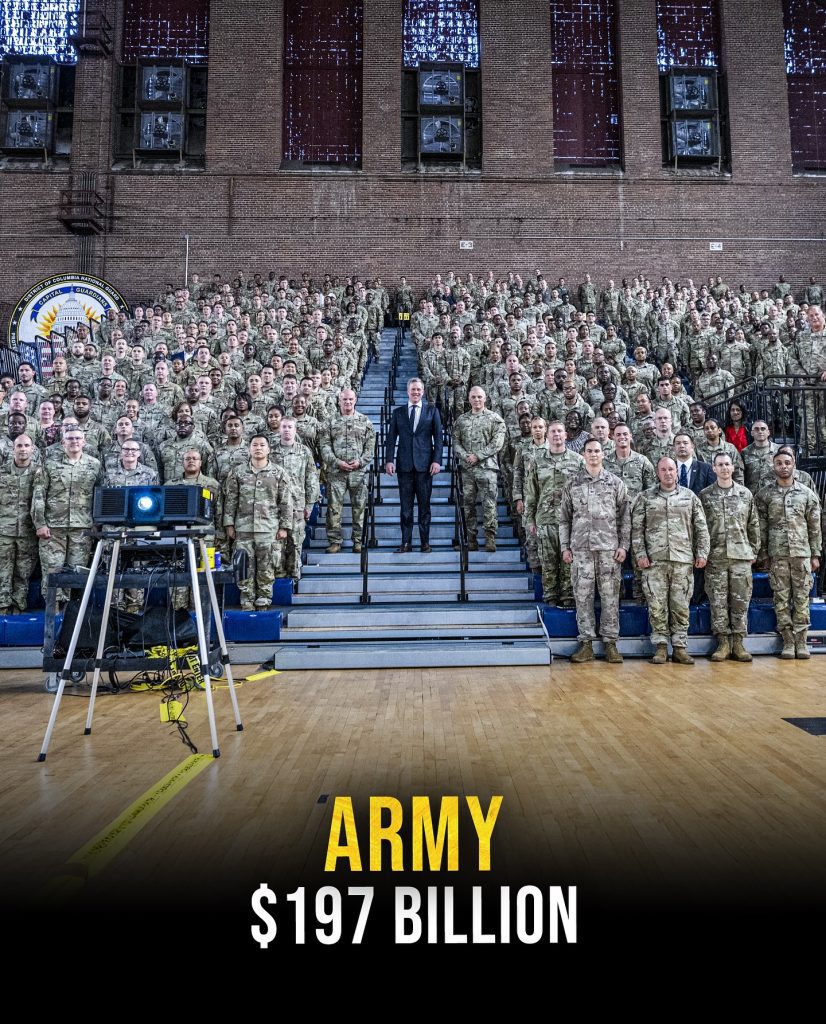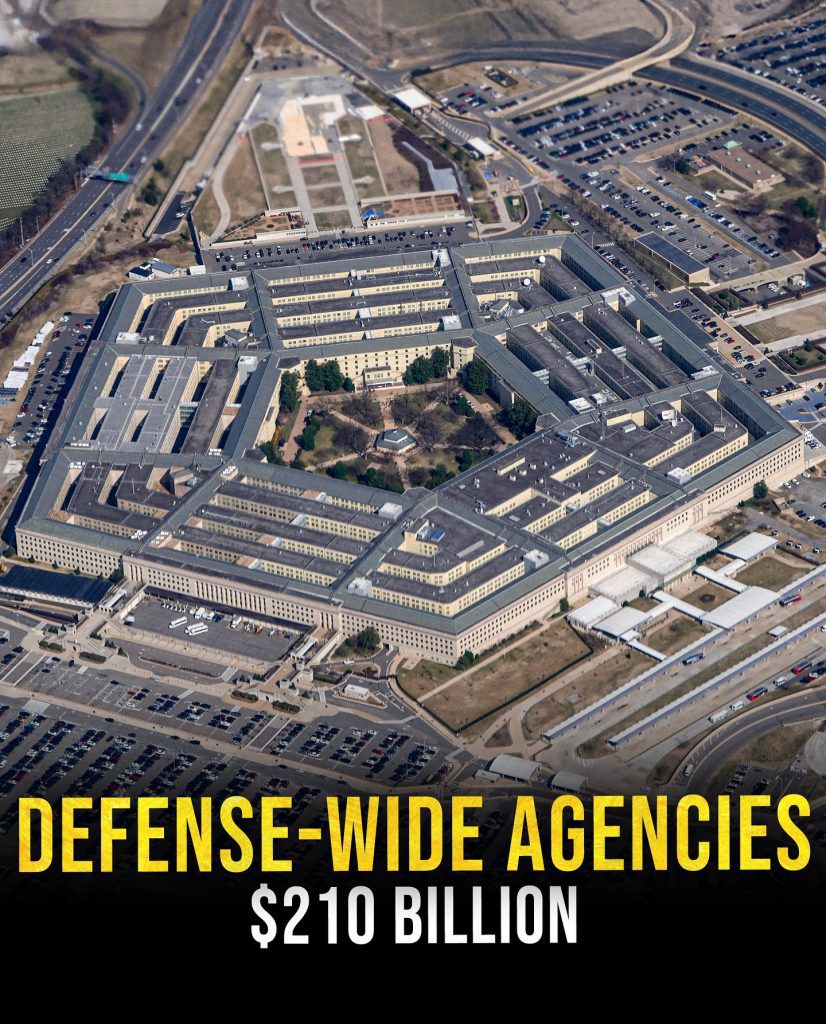President Trump Commits to Spending Over $1 Trillion on the Military in 2026 — Here’s How the Pentagon Plans to Divide It
When President Donald Trump committed to a military budget that pushes America’s defense spending past the trillion-dollar mark in 2026, it sent ripples not only through Washington but across the world. Defense spending has always been a point of intense debate, but this time the numbers themselves became the headline: more than $1 trillion dedicated to national defense in a single fiscal year.
The commitment, which signals a jump from prior years, reflects Trump’s long-standing position that American strength must be backed by a military so powerful that it leaves no doubt about its capabilities. The proposal, as outlined, isn’t just about headline figures—it’s about where the money will go, how it will be divided among branches, and what it says about America’s priorities in a world that feels increasingly tense.
For some, the number sounds staggering. For others, it feels inevitable given the scope of modern challenges. Either way, it’s clear that this budget marks a turning point for how the United States intends to project its power globally.
Air Force: $301 Billion

The Air Force receives the largest single share of the proposed budget—about $301 billion. This focus highlights the importance of air dominance in modern warfare. Beyond fighter jets, bombers, and transport aircraft, the Air Force’s budget leans heavily into advanced missile systems, cyber defense capabilities, and the expansion of space-related operations.
In recent years, the role of space has moved from background strategy to front-line defense planning, with the U.S. Space Force sitting under the Air Force’s umbrella. Investing here means investing in satellite networks, orbital surveillance, and missile detection—areas that define how wars will be fought in the coming decades.
For the Air Force itself, the funding ensures modernization of its aging fleet, continued development of next-generation fighters like the F-35, and expanded pilot training programs. It’s not just about war—it’s about keeping deterrence strong enough that battles never need to be fought in the first place.
Navy: $292 Billion

Close behind, the Navy’s $292 billion allocation demonstrates America’s intent to dominate the seas. Naval power has long been the backbone of U.S. global presence, and with new maritime threats and contested waters in regions like the South China Sea, this funding reflects a renewed commitment to maintaining superiority.
The Navy’s portion of the budget is expected to fuel the construction of new ships, the upgrading of existing fleets, and investments in submarine technology. Aircraft carriers, often seen as floating symbols of American power, remain central to the plan. The budget also emphasizes shipbuilding capacity in U.S. shipyards, which not only strengthens military readiness but also stimulates local economies.
This isn’t just about big ships and submarines, though. Naval funding also covers advanced missile defense, improved logistics, and better living standards for sailors—everything from new housing initiatives to base upgrades that improve quality of life.
Army: $197 Billion

The Army, though receiving a smaller slice of the pie compared to the Air Force and Navy, is still allocated a hefty $197 billion. The Army’s needs are different: it remains the backbone of ground operations, requiring sustained investment in manpower, training, and equipment.
In recent years, the Army has been modernizing to keep pace with both technological advances and evolving battlefields. The budget focuses on upgrading armored vehicles, expanding drone capabilities, and preparing for potential large-scale land conflicts. With global uncertainties, from Eastern Europe to the Middle East, the Army’s mission remains as vital as ever.
There’s also a focus on soldiers themselves—ensuring better pay, housing, and healthcare, which are central to maintaining an all-volunteer force. For many, these quality-of-life improvements are as critical as new tanks or rifles. They represent the recognition that people, not just machines, define military strength.
Defense-Wide Agencies: $210 Billion

Beyond the three major branches, a significant $210 billion is reserved for defense-wide agencies. This includes everything from intelligence and cyber operations to research and development at the Pentagon.
Much of this funding is expected to flow into high-tech areas like artificial intelligence, hypersonic weapons, missile defense, and cyber resilience. In a world where threats can come from hackers as easily as from armies, this portion of the budget reflects a shift toward future-facing challenges.
It also supports operations that don’t fit neatly under one branch, such as joint command structures and interagency defense projects. The Pentagon itself, as a nerve center of defense planning, benefits from this allocation, ensuring that coordination across services remains strong.
What This Means for America
Critics argue that $1 trillion is excessive, especially when domestic programs also need funding. Supporters, however, insist that the cost of not being prepared would be far greater. In Trump’s words, America cannot afford to be second to anyone when it comes to military strength.
The ripple effects of such a budget go beyond defense. Shipbuilding contracts boost local economies, aerospace companies expand operations, and bases across the country see upgrades that affect surrounding communities. Defense spending has always been tied to economic growth in many regions, and this budget is no exception.
For allies, the trillion-dollar figure sends reassurance that the United States remains committed to global defense leadership. For adversaries, it’s a warning that America intends to keep its edge. For ordinary citizens, it’s a reminder that defense spending touches nearly every part of life—whether through jobs, technology spin-offs, or global security.
Final Thoughts
Trump’s proposed 2026 defense budget is more than a number. It’s a statement about priorities, a map of where military power is heading, and a reflection of how America sees its role in a world full of uncertainty. With $301 billion for the Air Force, $292 billion for the Navy, $197 billion for the Army, and $210 billion for defense-wide agencies, the total comes to a staggering $1 trillion.
Supporters say it’s money well spent on security and deterrence. Critics warn of unchecked costs. But no matter where one stands, the size and scope of this budget guarantee that it will be remembered as a milestone in American defense history.

